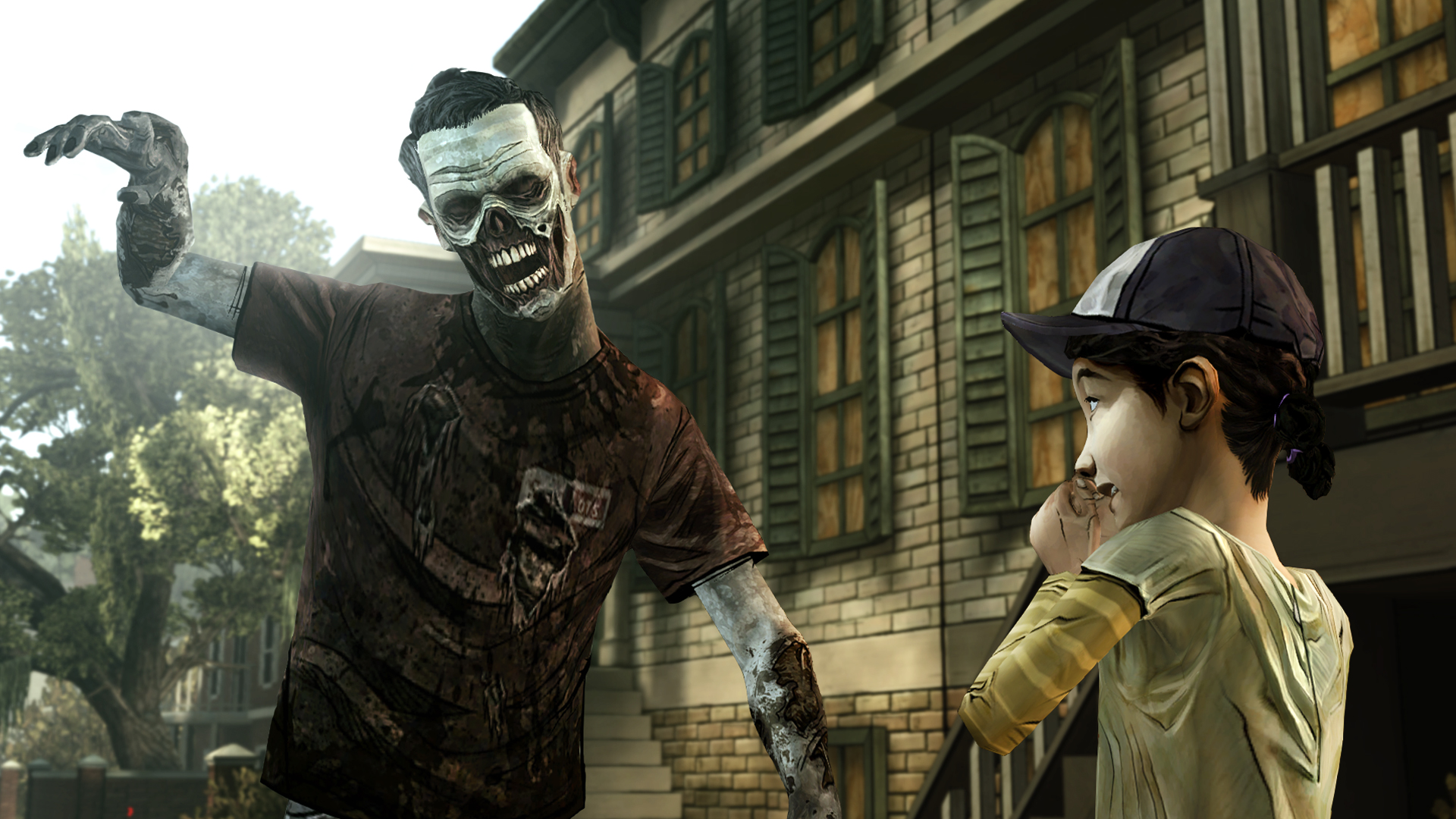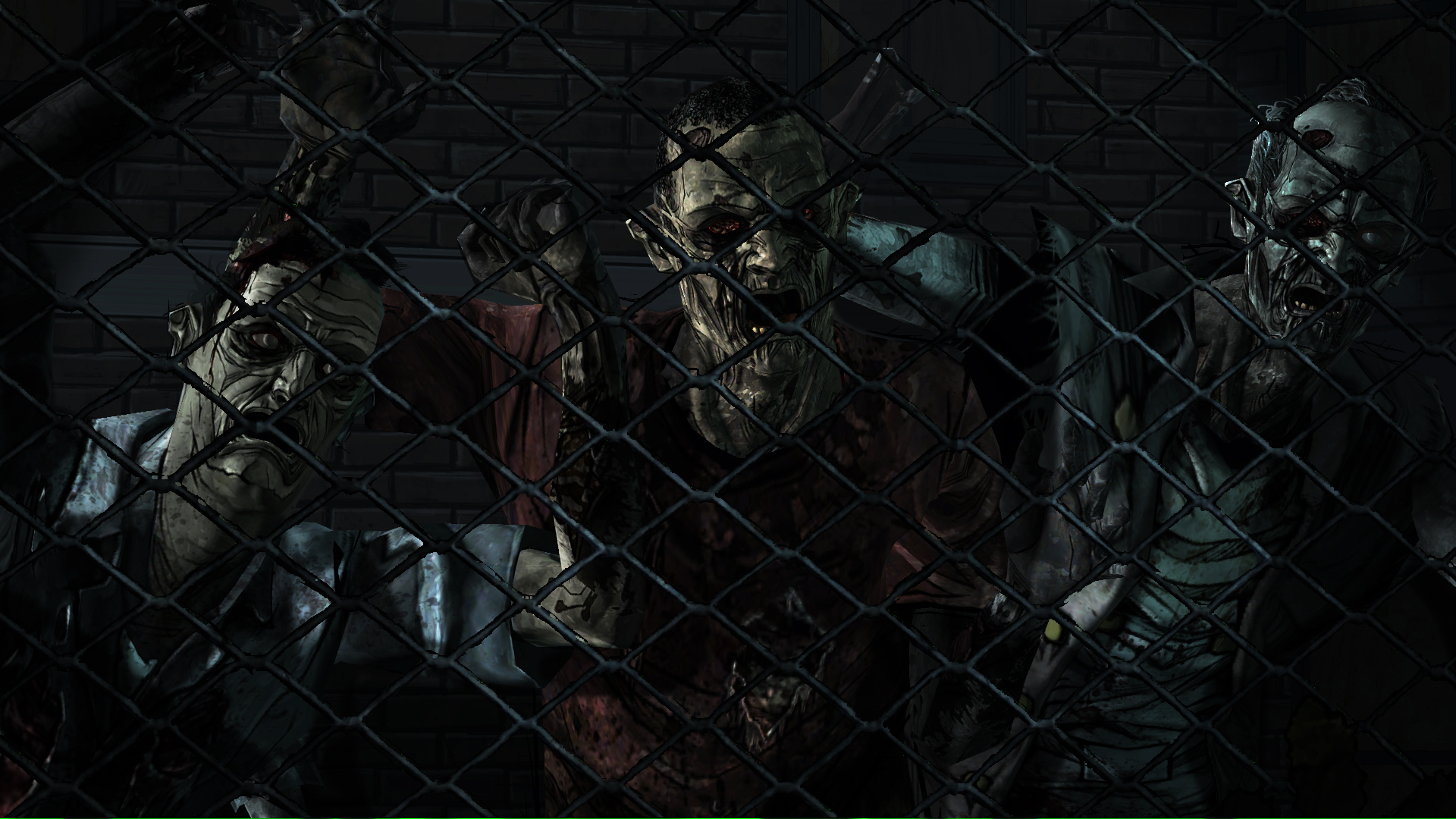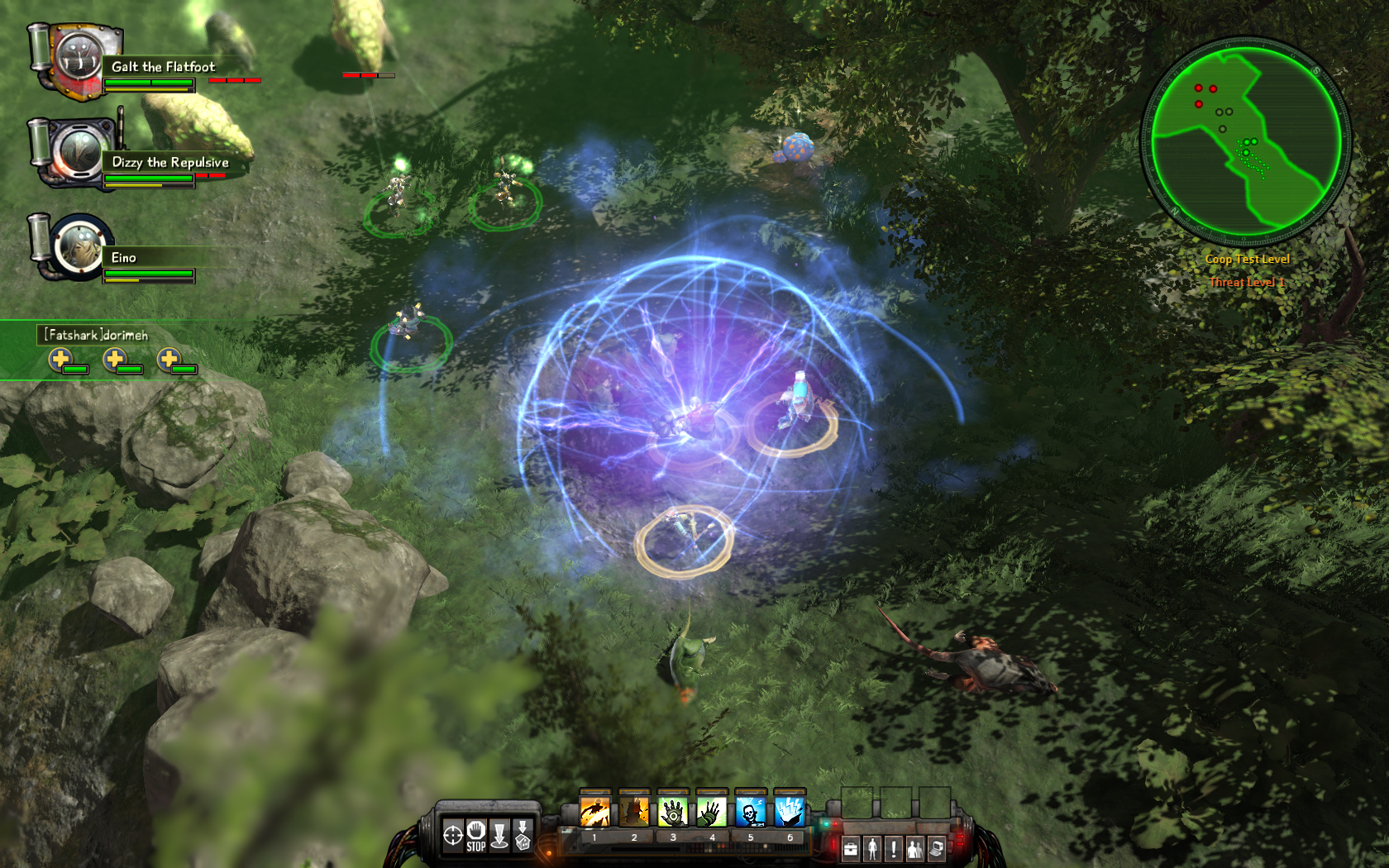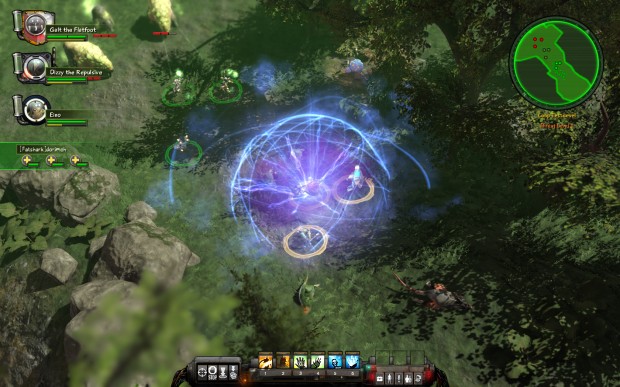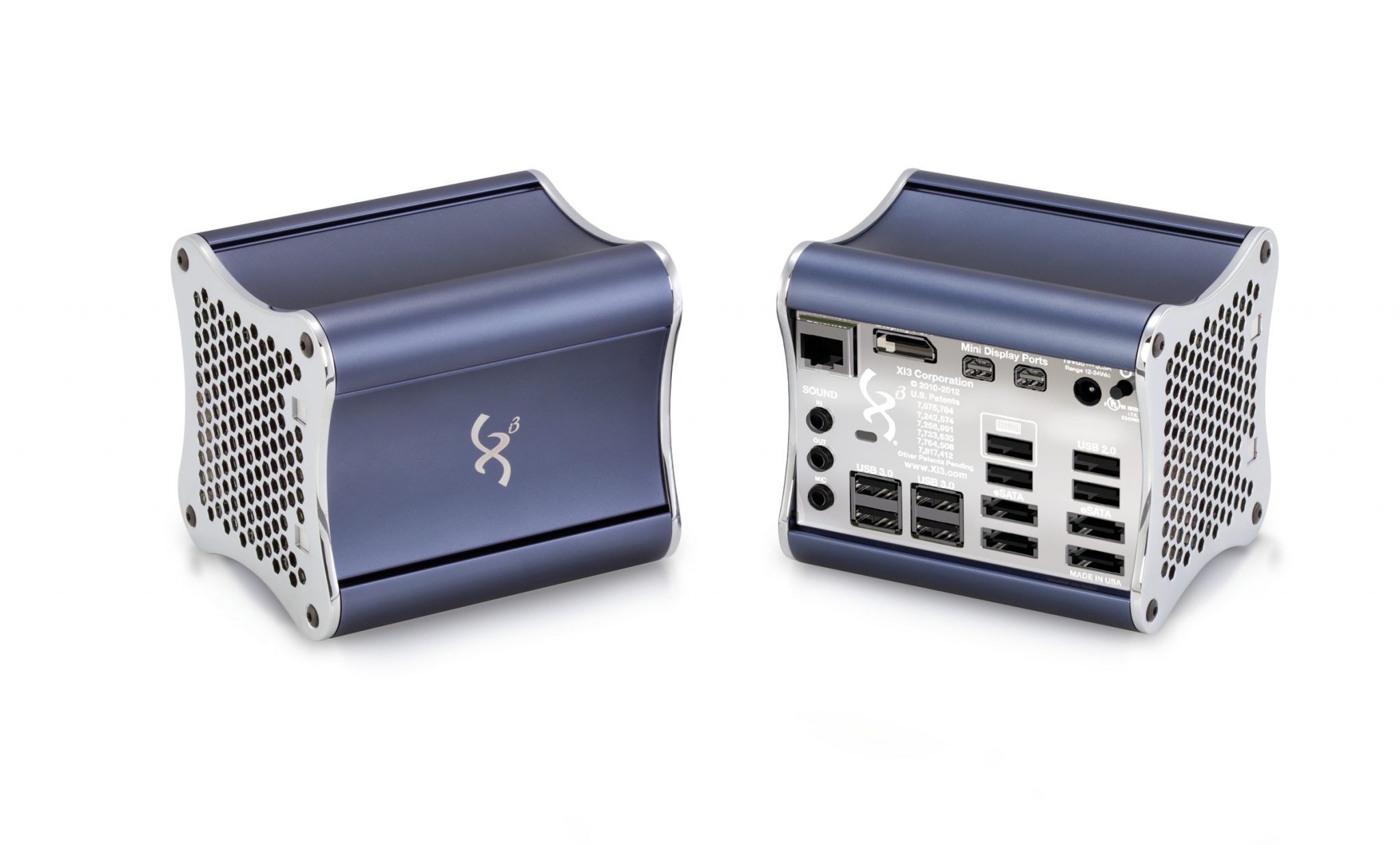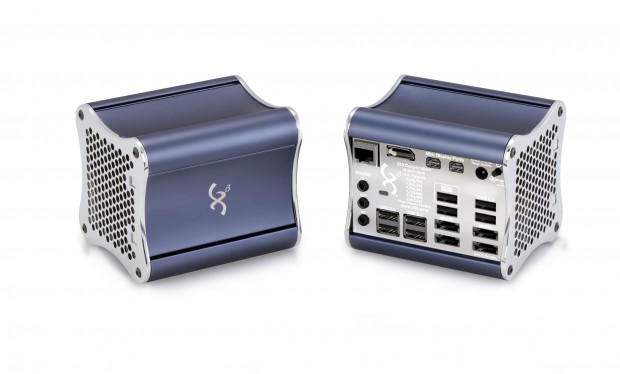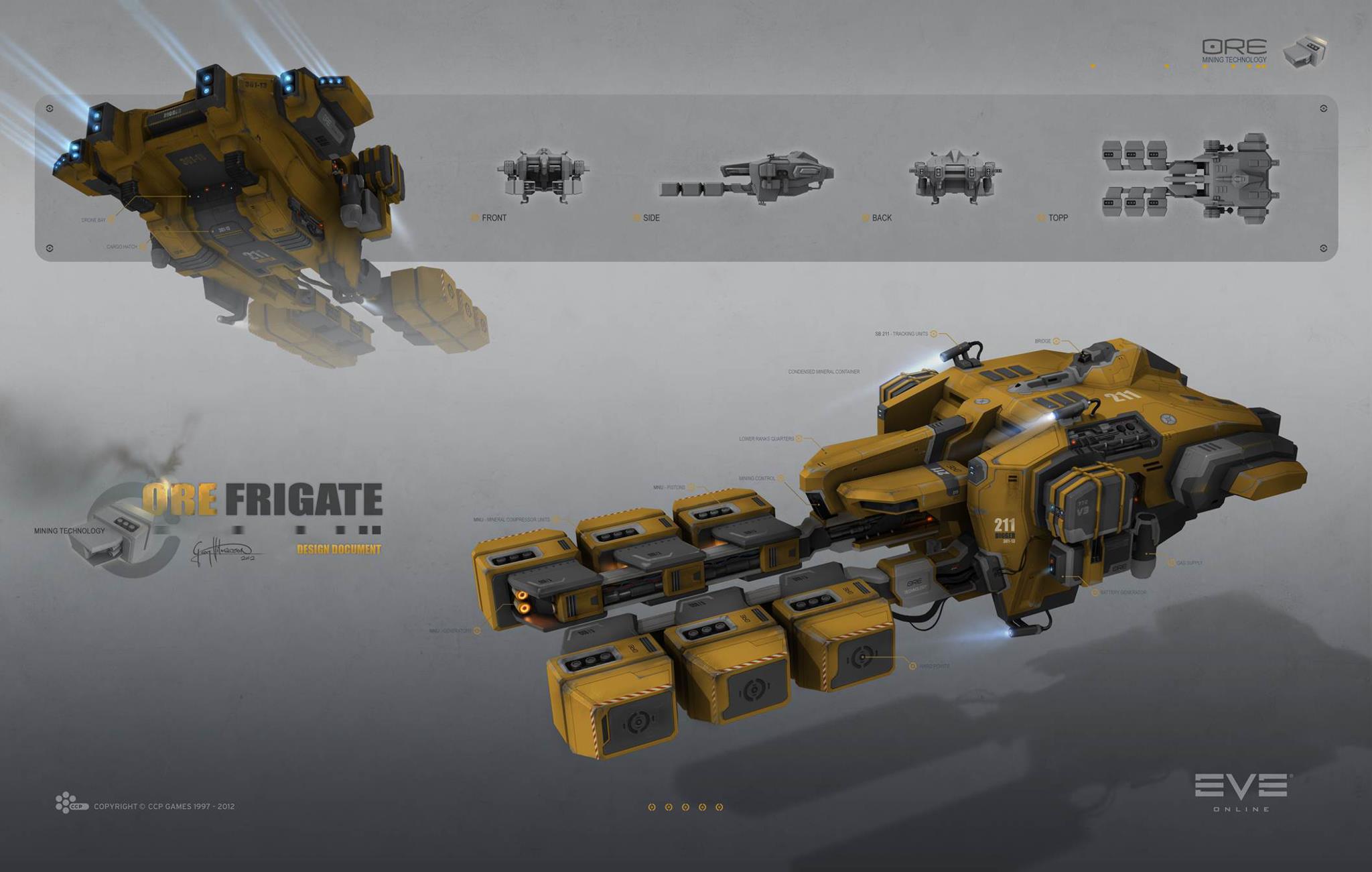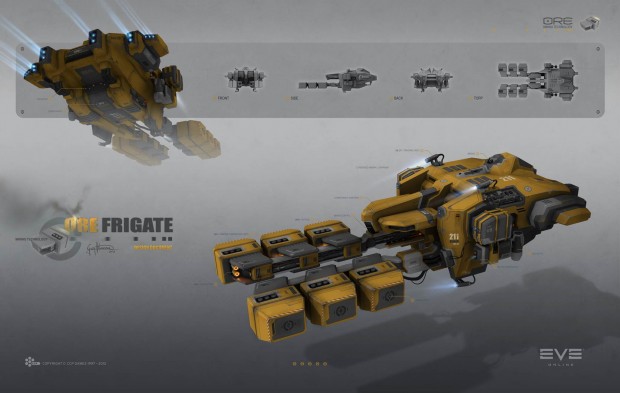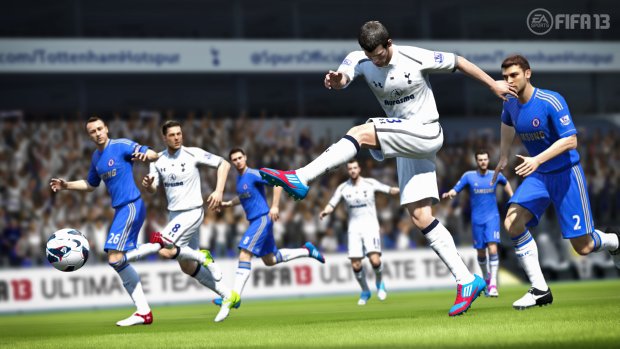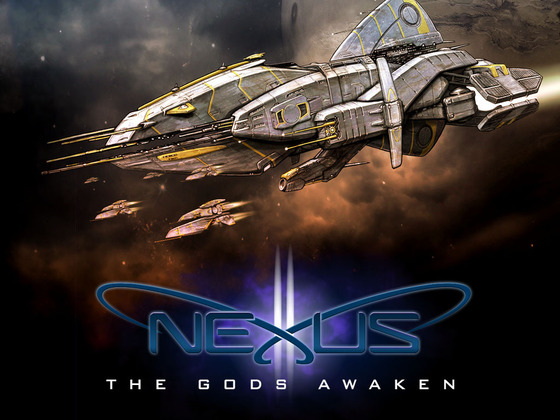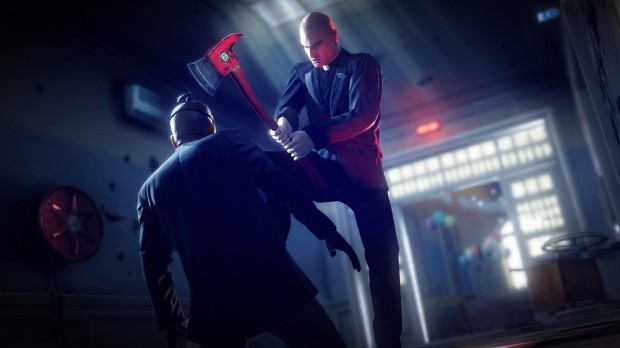Telltale Games has released a new trailer as well as some screenshots from the upcoming The Walking Dead Episode 4: Around Every Corner. Enjoy!
Author - Jerry Paxton
STOCKHOLM, Sweden. October 2, 2012. Fatshark today announced a release date for the upcoming co-op DLC to Krater – October 23, 2012.
“The co-op DLC will be available on October 23, 2012 via Steam. The download will be free, and will also include a large number of updates to the single player content.” says Martin Wahlund, CEO and Executive Producer, Fatshark. “Shortly thereafter there will also be new character DLC’s with some nice vanity flavor to them if you want your character to look the best when playing the game.”
Krater is a retro-flavored post-apocalyptic top down RPG where you control a squad of free-diggers through the perils of an open game world. It is not your generic action RPG clone – it is lush in its colors, hardcore and got a different vibe to it. The base pillars are crafting, exploration and consequence. Consequence brings not only the ability for the characters to level up and improve themselves, but also permanent injuries and death.
“The game experience from day one to now is very different. We have listened to the player feedback. There is a lot things adjusted and added to the game.” says Robert Bäckström, Producer, Fatshark. “If you played the game at release, and play it on October 23rd, you will get a whole new experience.”
Visit www.kratergame.com for more detailed information.
To get the latest info on all Fatshark activities; follow us www.twitter.com/fatsharkgames and @fatsharkgames at Instagram, like uswww.facebook.com/fatsharkgames
Co-Op Screenshots
Grave Encounters 2, the new film from the Vicious Bros., begins by showing clips of students reacting and talking about Grave Encounters. The new film takes a reality/viral-video style voyage in a world where the first film was actually released to its characters. The new cast in the sequel begin to investigate the original film’s production (which has become a sort of cult-film) and decide to delve deeper into its happenings. Obviously, this is just a terrible idea and will results in creeps, scares, chills, and death. Unlike Human Centipede 2, which takes a similar look at its preceding film, Grave Encounters 2 does this frame story style very well, and the Vicious Bros. should be commended for balancing the two films together – adding a lot of new mythology in the sequel while keeping grounded in the world setup in the original.
The scares are far more visceral in this sequel, with more blood and straight-out action than before. The cast is all natural in their deliveries, which is so often an issue in these found-footage style films, and were a pleasure to watch. The effects budget has also been increased for this one, and the added production value shows. All of the effects come off VERY realistically, and it all blends together in a ballet of horror.
Additionally, the way the directors weaved in some serious twists and turns in the movie’s plot was masterful and, without giving anything away, I was very satisfied with how it all turned out. Overall, I would definitely recommend Grave Encounters 2 for anyone looking to watch a film with genuine scares this Halloween season.
Grave Encounters 2 will be available on-demand beginning today, with a select theatrical release on October 12.
[easyreview title=”Grave Encounters 2 Review Score” cat1title=”Overall Score (out of 5)” cat1detail=”” cat1rating=”4″] Our Rating Scores Explained
SALT LAKE CITY -October 1, 2012 – Xi3 Corporation today unveiled two new Xi3® Modular™ Computers (the X7A Modular Computer and the X3A Modular Computer). Additionally, the company announced today it has slashed the starting price of its award-winning X5A-5342 Xi3 Modular Computer to $499 from $899.
This news release provides additional product details about the X7A and X3A Modular Computers, both of which were initially disclosed by the company via a Kickstarter project launched by Xi3 three days ago. Xi3’s Kickstarter project (” Xi3: Help us Usher in the Post-PC Era“) allows Kickstarter Fans and Followers to learn about Xi3’s plans for two new Xi3 Modular Computers, while also allowing them to place pre-orders now for X7A Modular Computers and X3A Modular Computers. Additionally, backers of Xi3’s Kickstarter project who place a pre-order Pledge for the X7A or X3A will receive their new Xi3 Modular Computer up to two weeks prior to General Availability and will also earn the right to pre-order future Xi3 products for early delivery as well.
“Xi3 Modular Computers are designed from the ground up as the computers for the Post-PC Era,” said Jason A. Sullivan, founder and President and CEO of Xi3. “The idea of single-use PCs that have limited useful lives is not only archaic, but it’s wasteful and expensive. By contrast, the tri-board design of Xi3 Modular Computers makes it possible to have computers that can be regularly and easily upgraded and modified. And with our newest Xi3 Modular Computers, we’re now ready to enter a new era as we expand into the realms of performance computing and low-cost entry-level computing.”
X7A Modular Computer Unveiled (for Power Users, Gamers and Engineers)
Xi3’s new X7A Modular Computer is designed specifically for gamers, engineers and power users. Housed in the standard Xi3 chassis that measures 4.27×3.656×3.656-inches, the X7A Modular Computer packs a real wallop, especially for a machine roughly the size of a grapefruit that draws a mere 40Watts of power.
The X7A Modular Computer is available with up to
- A quad-core 64-bit, x86-based 32nm processor running at up to 3.2GHz (with 4MB of Level2 Cache),
- An integrated graphics processor (GPU) containing up to 384 programmable graphics cores (or shaders),
- 4GB-8GB of DDR3 RAM,
- 64GB-1TB of internal solid-state SSD storage (with up to 12Gbps throughput speeds),
- Three display ports providing maximum resolution of 4096×2160 (including 1 DisplayPort v1.2 and 2 Mini-DisplayPorts v1.2),
- Four eSATAp 3.0 ports,
- Four USB 3.0 ports,
- Four USB 2.0 ports,
- 1Gb Ethernet port, and
- Three audio ports (1 input and 2 outputs: 1 copper and 1 optical).
Designed to be used as a standalone machine or in clustered configurations, the X7A will run any x86-based Operating System, including Windows 8 and lower, Linux, UNIX, etc. Prices for quad-core versions of the X7A Modular Computer will begin at $1,100, with General Availability starting in February 2013.
X3A Modular Computer Unveiled (for Low-Cost Basic Computing Use)
By contrast, Xi3’s X3A Modular Computer is designed for basic computer use, including home and office environments. The X3A Modular Computer is available with up to
- A dual-core 64-bit, x86-based processor running at up to 1.65GHz (with 2MB of Level2 Cache),
- An integrated graphics processor (GPU) containing 80 programmable graphics cores (or shaders),
- 4GB of DDR3 RAM,
- 32GB-1TB of internal solid-state SSD storage (with up to 12Gbps throughput speeds),
- Two display ports providing maximum resolution of 2560×1600 (including 1 HDMI/DisplayPort v1.2 and 1 Mini-DisplayPort v1.2),
- Four eSATAp 3.0 ports,
- Two USB 3.0 ports,
- Four USB 2.0 ports,
- 1Gb Ethernet port, and
- Three audio ports (1 input and 2 outputs: 1 copper and 1 optical).
X3A Modular Computers operates at 18Watts of power and will run any x86-based Operating System, including Windows 8 and lower, Linux, UNIX, etc. Prices for dual-core versions of the X3A Modular Computer will begin at $499, with General Availability starting in January 2013.
Starting Price for the X5A-5342 Model Xi3 Modular Computer Dropped to $499
The very first Xi3 Modular Computer (the X5A-5342 model) was introduced by the company in January 2011 at the International CES trade show held in Las Vegas, Nevada. Shipments of the X5A-5342 began later that year and it is now found in use around the world within national and local governmental agencies and departments, educational institutions, large corporations, small businesses and by individual consumers.
Given the pending release of the new X7A and X3A Modular Computers, as well as the forthcoming release of the company’s Xi3 microSERV3R™, Xi3 has decided to significantly reduce the starting price point of the X5A-5342 model Xi3 Modular Computer to $499 from $899 effective immediately.
The X5A-5342 model Xi3 Modular Computer runs any x86-based Operating System at 20Watts of power. It is available with up to
- A dual-core 64-bit, x86-based processor running at up to 1.8GHz (with 1MB of Level2 Cache),
- An integrated graphics processor (GPU),
- 2GB of DDR2 RAM,
- 16GB-1TB of internal solid-state SSD storage,
- Two monitor ports providing maximum resolution of 2560×1600 (including 1 with DVI-DL + VGA / DVI-DL + DP / VGA + DP support, and 1 with DP/DVI support, HDMI optional),
- Two eSATAp 2.5 ports,
- Six USB 2.0 ports,
- 1Gb Ethernet port, and
- Three audio ports.
Significant Benefits of Xi3 Modular Computers Summarized
Each Xi3 Modular Computer
- Qualifies as a small form factor computer and is housed in a chassis roughly the size of a softball (4.27×3.656×3.656-inches),
- Uses significantly less electricity than other computers with similar specs, often as little as one-tenth the power (40Watts for the X7A, 20Watts for the X5A-5342, and 18Watts for the X3A),
- Uses the patented tri-board design of the Xi3 Computer Architecture, and therefore
- Can be easily updated, upgraded, modified and/or repaired by simply replacing one of the three existing boards inside an Xi3 Modular Computer for a new one.
About Xi3 Corporation
Formed in 2010 and headquartered in Salt Lake City, Utah, Xi3 Corporation utilizes “The Power of X” to bring its building block approach to the world of computing, an approach Xi3 applies internally and externally to hardware solutions and software applications. For more information on Xi3 Corporation (an ISYS TechnologiesSM company), please visit www.Xi3.com.
October 1, 2012–Reykjavik, Iceland: CCP Games, one of the world’s leading independent game studios, has announced EVE Online: Retribution, the 18th free expansion for its award-winning sci-fi massively multiplayer online game.
Coming on December 4, 2012, EVE Online: Retribution will shake the very core of the limitless game universe as it rockets towards an unprecedented 10th anniversary year with more players than ever before.
Central to EVE’s dynamic unending content are the dreams, plans and actions of its players. EVE Online: Retribution accentuates the core philosophy of the legendary online society: that each decision and each action bears truly meaningful consequences via human interaction.
A complete rework of EVE’s bounty system will allow players to exact revenge by placing bounties on individuals, corporations and alliances and enlisting other players to “do the dirty work.” The agression flagging system, “Crimewatch,” will undergo changes as well, making clear the consequences of actions, whether legal, suspect or illegal.
EVE Online: Retribution will see all frigates, destroyers and cruisers collectively reworked in a tremendous game balancing effort that will lead to massive play style refreshments for pilots of all skill levels. Four new Tier 2 destroyer-class ships will be added alongside major changes in other systems, including NPC artificial intelligence, factional warfare, sound design and the user interface.
“This is the perfect followup to a recent series of well-received expansions in which we’ve put even more control over the game universe in the hands of our players,” said Jon Lander, EVE Online’s Executive Producer. “Limitless human conflict and real consequences for your actions: sounds like a compelling dramatic setting to me.”
More about EVE Online: Retribution will be revealed at the feature page (www.eveonline.com/retribution) and in regular developer blog posts leading up to launch (http://community.eveonline.com/devblog.asp).
EVE Online on Facebook: www.facebook.com/eveonline
EVE Online on Twitter: www.twitter.com/eveonline
This year marks Knott’s Berry Farm’s 40th seasonal Halloween Haunt event. As this is the big FOUR-ZERO for the park, they tried to pull out all the stops and make this their best year yet. Our first stop of the night was “Warehouse P”, the backstage warehouse where makeup and costuming is done. We checked out some of the various character makeups being created and were delighted by makeup supervisor Denice Paxton’s charm and enthusiasm as she described the various characters to us while her artists were hard at work. After exiting the makeup area and entering the park, we began our journey of terror.
This year sees a new, up-charge maze called “Trapped”, which pits groups of six guests at a time against a series of haunted rooms and challenges. We were not allowed in this maze as they are keeping it as secret as possible but, from some of the guests we spoke with leaving the maze, you should check it out. Reservations are limited so see their website for bookings – again, there is an additional charge for it.
Another new offering this year is “Trick or Treat” – a maze which puts guests in the role of trick or treaters unknowingly entering the Green Witch’s house for a Halloween party. I loved this maze. While not as intense or unabashedly scary as others, it told a story and had some very cool set pieces and theatrical touches. The maze attendants send in groups of about 15 guests at a time, which is perfect. Anymore than that and it would start to feel like a cattle line. The smaller group size ensures that each group gets the same experience.
The main antagonist for this year’s Halloween Haunt is the Green Witch. The Green Witch was hung way back when by the citizens of Ghost Town (the park’s first themed area). Before she met her end, the witch cursed the town as well as vowed her revenge. It looks like she has come back from beyond to collect as the character is everywhere this year. She is not alone, however, as she has a gang of “Tricksters” with her. These tricksters do her bidding as well as cause all manner of mischief around the park. So, don’t be surprised if you see a group of masked individuals make off with a baby or cause some equipment to malfunction during your visit. Those Tricksters are big-time trouble makers. The other haunted Cedar Faire (Knott’s Berry Farm’s parent company) events are still using the Overlord character from year’s past as their antagonists.
The monsters of Ghost Town Streets, Necropolis, and Boardwalk Streets all deserve a lot of credit. In past years, I have thought that one street zone or another will come off with less intensity than others. Maybe it’s because this is the 40th, maybe they all had a pep-talk, or perhaps they are being dosed with “Go Go Juice”. Whatever the reason, all of the street area monsters were very intense and stayed in-character for as long as I saw them. The only drawback to this newfound intensity is that street characters are more camera-shy as to not break character. So, don’t be offended if they are too busy scaring to take a photo with you. If you would like a photo, there are some white masked characters near the front gates which have been designated as photo ops for guests.
Aside from “Trick or Treat”, the next best maze we went through during our trip was “Slaughterhouse”. If you have been to some more recent years of Knott’s Scary Farm, you probably were disappointed in this maze. This year, however, the maze has been completely re-arranged and the difference is astounding. The maze is so good this year that I wish Knott’s had re-branded it as something else and made more of a big deal of it to media outlets. The maze has a very “gettable” main story now and the overall flow of the maze is spot-on. “Slaughterhouse” is not to be missed this year!
The other two big mazes being touted this year are “Pinocchio Unstrung” and “Dominion of the Dead”, a new take on the fan-favorite vampire maze of Knott’s past haunts. “Pinocchio Unstrung” was a lot of fun. The narrative of Pinocchio’s story was definitely present, going from a sleepy hamlet all the way to Pleasure Island, and it had some really cool set pieces. Also, the maze talent was there and doing a great job of staying in character.
Unfortunately, I was not as impressed with “Dominion of the Dead” as I had hoped. “Dominion”, as haunt employees call it, was completely lost on me. There is some really interesting architecture in that maze – large rooms, bizarre walls, spider holes for monsters to hide in. I just didn’t understand what I was doing there in terms of the maze’s story. Not having a clear narrative is not the end of the world when it comes to a haunted house so long as the talent picks up the slack. The problem is that I was never really scared in “Dominion of the Dead”. There are a lot of characters playing instruments as you walk by them instead of jumping out at you but, because I had no idea where the maze was taking place, it just made the whole thing murkier. I left there scratching my head.
Aside from “Slaughterhouse”, another maze re-designed for this year was “Endgames: Warriors of the Apocalypse”. Like the previously-mentioned “Slaughterhouse”, “Endgames” was really impressive this year. The maze’s narrative made a whole lot more sense than it did last year and the set pieces felt much more the part of being in an apocalyptic, gladiatorial showdown.
Four of the park’s maze locations have been relocated this year. “Trick or Treat”, “Endgames”, “Dominion”, and “Delirium” are all located in the park’s backlot area. This is really strange as you get the mazes all in one area but you lose the bit of the journey in getting there. For me, part of experiencing a haunted house is the build up of walking to the place – seeing the decorations, getting scared by street talent, etc. The area which these mazes are placed kind of feels like a big empty parking lot. I don’t think I would have minded so much if they filled the area up more with decor, monsters, etc. The biggest con to this new layout are the lovely ladies of the Red Moon Dance Company in their show, “Cursed”. The stage for this amazing bellydance show is located at a far off edge of this area. A lot of guests might miss that it’s there altogether. If you are going to the event, make sure you ask its location from park attendants so you don’t miss it. The show has a lot going for it and, like last year, is a must-watch for park-goers. If Knott’s is smart and recognizes the talent they have with the ladies of “Cursed”, they will put them up at the Wagon Camp next year so they can get a larger show going.
“The Hanging” is back again with a tongue-in-cheek look at the past year’s news stories and events. The show is entertaining and pokes fun at plenty of pop culture references and celebrities, including Kristen Stewart which was fun, but feels like they are cramming too much in and it feels a bit on the long side. This content-cramming comes at the expense of laughter. I think they should shorten the show up a bit and trim the fat, if you will, focusing on more genuine laughs. Not every joke is a winner – might as well showcase the good ones. If they absolutely need to stretch the show’s runtime out, perhaps some additional way could be found. Some other parks use musical numbers in the shows to stretch for time and, while that may not work with the show’s overall theme of hanging someone from the past year’s news, something has to be an option.
In addition to “The Hanging” the park is bringing it back old school with the witch hanging at midnight. Back when Knott’s Halloween Haunt started, “The Hanging” was just that – a witch hanging (see: Green Witch). Over the years, it transformed into more of a comedy show. For the 40th, the original show is back at midnight. So – BE SURE to check that out at the Calico Square stage.
Dining at Knott’s Berry Farm is excellent, with plenty of food and drink options for guests. There is the Ghost Town Cantina, Johnny Rockets – even a Panda Express. You will not leave Knott’s Scary Farm hungry.
Overall, Knott’s Scary Farm’s 40th Halloween Haunt is a really fun time with plenty of scares to go around. The park is stepping up their game and, based on all the good things I saw this year, I have even higher expectations of the 41st Halloween Haunt in 2013. We would like to thank Jennifer Blazey of Knott’s PR for making our trip to the park possible.
You can get your tickets as well as “Trapped” reservations online at the event’s website.
Video
Images
REDWOOD CITY, Calif. – Sept. 27, 2012 – Electronic Arts Inc. (NASDAQ: EA) announced today that EA SPORTS™FIFA Soccer 13 has launched to unprecedented opening day sales in North America with 353,000* games sold—a 42* percent increase year-over-year—on the PlayStation®3 computer entertainment system and Xbox 360® videogame and entertainment system. Those fans across North America played a staggering 1.4 million online games in the first 24 hours after the game launched, up 35 percent year-over-year. It was also the biggest global launch-day performance of any iOS game on iPhone®, iPad®, and iPod touch® in EA history. FIFA Soccer 13 launched Tuesday across North America and will be available around the world beginning Friday.
Momentum in North America was fuelled by a launch event in New York hosted by Snoop Lion that propelled the hashtag #SnoopsFIFA13 trending in the United States and worldwide on Twitter, midnight openings at over 2,000 retail stores across the country, and game quality. Critics are praising FIFA Soccer 13 with 39 review scores of 90 or above.Eurogamer Spain awarded FIFA Soccer 13 a perfect 100 score, Multiplayer in Italy called it the “best FIFA ever” and JeuxVideo Magazine said “FIFA 13 approaches a form of perfection.”
It was also a record-setting opening for FIFA Soccer 13 on iOS around the world. FIFA Soccer 13 for iPhone, iPod touch and iPad achieved the biggest launch-day performance of any EA iOS game in history, with downloads up 62 percent over last year*. FIFA Soccer 13 also hit No. 1 in Top Paid Games in 55 countries and No. 1 in Top Grossing Games in 24 countries on the App Store^.
Similar to North America, there is unprecedented anticipation for FIFA Soccer 13 around the rest of the world. For the first time in the history of EA SPORTS, over 1.3 million games** (and still counting) have been preordered worldwide, pointing toward a historic opening when the game launches around the world on Friday.
“We’re thrilled that fans throughout North America have embraced FIFA Soccer 13 in such a big way,” said Andrew Wilson, Executive Vice President of EA SPORTS. “North Americans appreciate a great-playing game and their level of engagement with our game is helping to drive the sport’s popularity in the United States.”
During the month of September four North American cities—Los Angeles, New York, Toronto and Chicago—trailed only London, England, among the top five cities^^ with the most engaged fans among the 10 million fans in the EA SPORTS soccer community on Facebook at http://www.facebook.com/
FIFA Soccer 13 captures the unpredictability of the real-world sport with breakthrough features like First Touch Control that ensure no two matches ever play the same, and new online services like EA SPORTS Football Club Match Day that completely connect FIFA Soccer 13 to the real-world season for the world’s top leagues. The FIFA Soccer 13 demo is available through Origin™, Xbox LIVE® and PlayStation Network. FIFA Soccer 13 trailers, screenshots and fact sheet are available at http://info.ea.com.
FIFA Soccer 13 will be available for now in retail stores throughout North America, and as a digital download throughOrigin. The videogame is available for the PlayStation 3 with PlayStation Move support, Xbox 360 with Kinect™, PlayStation®Vita handheld entertainment system, Nintendo Wii™ console, PC, PlayStation®2 computer entertainment system, Nintendo 3DS™, and PSP® (PlayStation®Portable) system and November 18 on Nintendo Wii U™ system. The game is available on the App Store for iPhone, iPad, and iPod touch. FIFA Soccer 13 is rated E for everyone by the ESRB and Pegi 3+.
Join more 10 million fans in the EA SPORTS football community at http://www.facebook.com/
EA SPORTS is one of the leading sports entertainment brands in the world, with top-selling videogame franchises, award-winning interactive technology, fan programs and cross-platform digital experiences. EA SPORTS creates connected experiences that ignite the emotion of sports through industry-leading sports videogames, including Madden NFL football, FIFA, NHL® hockey, NBA LIVE basketball, NCAA® Football, Tiger Woods PGA TOUR® golf, SSX™, andFight Night boxing. For more information about EA SPORTS, including news, video, blogs, forums and game apps, please visit www.easports.com.
*According to internal data
** according to internal sales data as of September 25, 2012 in NA, and Sept. 22 in EU
^ According to AppAnnie.com
^^ According to Facebook.com
If you are a fan of space RTS games, you probably have heard of Nexus: The Jupiter Incident. It was a benchmark RTS title which became a sleeper hit – beautiful graphics, innovative gameplay, and intriguing story all can be found within its gameplay experience. Fans have clamored for a sequel for quite some time and now, the developer has hit Kickstarter with a campaign to get one funded. Checkout their Kickstarter page for more information on how you can help get this sequel made.

